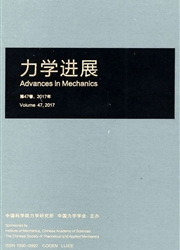

 中文摘要:
中文摘要:
开展航天器动力学与控制的研究在航天技术的发展中起到举足轻重的作用,其目的在于发展有效的方法促使航天器在各阶段平稳可靠地运行.航天器技术发展迅速,其形式日趋多样化,功能与构造日趋复杂,已经向大型空间站、微小卫星、深空探测等方向发展.航天器结构表现出多耦合、非线性、极端外界环境,以及大尺度柔性结构等特征,由此激发起航天器动力学与控制领域各方向的深入研究.航天器动力学与控制的研究方法覆盖理论分析、数值仿真,以及实验模拟等诸多方面,研究内容十分丰富.本文概括介绍了近年来航天器动力学与控制研究方面的发展状况,综述了跨航天器动力学与控制、航天器系统级动力学与振动控制、航天器部件级动力学与振动控制等航天领域中的若干基础问题.内容主要集中于航天领域中不同应用范围、不同层次结构的航天器动力学模型的建立和动力学响应与振动控制的研究方法及已取得的成果.最后,提出了该领域中值得进一步考虑的科学问题及未来的发展方向.
 英文摘要:
英文摘要:
The research on dynamics and control of spacecrafts for the purpose of establishing effective strategies to ensure reliable operation of spacecrafts at each stage plays a prominent role in the developments of the space technology. The space technology is developing rapidly, and showing more and more diversities, in which functions and structures of the spacecrafts become more and more complicated. The appearance of large size space stations and micro-satellites, and the developments of deep space explorations have brought about multi-couplings, nonlinearities, extreme environments, and extremely high flexibilities. The research of dynamics and control of spacecrafts is developing thoroughly in several directions, including theoretical analysis, numerical simulations, and experimental simulations. In this paper, a review is given of foundamental problems and their recent developments in dynamics and control of the multi-spacecraft, the whole system, and the components of one single spacecraft. It is mainly focused on summarizing the existing methods and results of dynamic modeling, response analysis, and vibration control of spacecrafts in different application areas, and with different hierarchical structures. Moreover, some scientific problems in need of further study, and prospects for new development directions in this field are presented at the end of this paper.
 同期刊论文项目
同期刊论文项目
 同项目期刊论文
同项目期刊论文
 期刊信息
期刊信息
